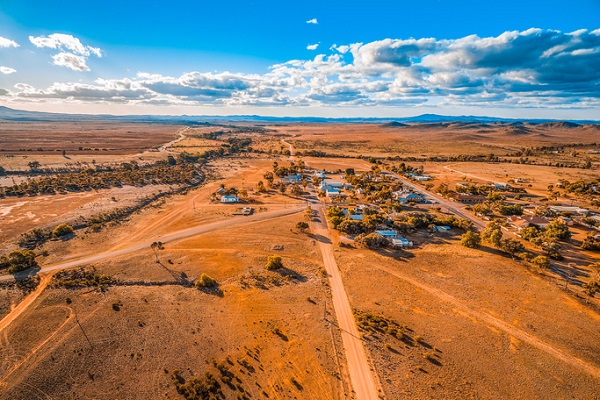SA hits a hydrogen “gold rush”, exploration to begin
In less than 12 months, six companies have taken up or applied for 18 exploration licences targeting so-called “gold” hydrogen, named for its natural occurrence, covering 32% of the entire state, in a report by the Australian Financial Review.
H2EX, one of the companies looking into the hydrogen supply in South Australia, has applied for permits covering an area in the southern half of Yorke Peninsula and Kangaroo Island, where two unsuccessful oil wells were drilled in the 1930s that turned up high-purity hydrogen.
ADVERTISEMENT
The four licenses that H2EX have applied for cover about 32,000km² in the state.
Several others have since followed, encouraged by a CSIRO and Geoscience Australia research paper published last year, which documents accidental discoveries of hydrogen across the country.
However, while many are calling hydrogen the “green” energy, several environmental groups have questioned its benefits.
Speaking with The Fifth Estate, Beyond Zero Emissions (BZE) says that much of this investor boom can be attributed to the gas industry trying to stay relevant and that “green” hydrogen (hydrogen extracted from water by electrolysis) is much better than “natural” (or “geologic”) hydrogen, because the latter needs to be extracted from natural gas.
“The challenge with this so-called ‘natural’ hydrogen is that it is a finite resource and comes with plenty of methane so it just adds to the extraction of fossil fuels and would need expensive and unproven carbon capture to work,” BZE head of research Tom Quinn tells The Fifth Estate.
“Green hydrogen is essentially an infinite resource that sets up Australian industry for the long term as it will continue to get cheaper as production ramps up. Our trading partners want green hydrogen and it will help firm up energy storage in a 100% renewable grid. Our research shows that Australia could have a $47 billion green hydrogen industry by 2050.”
Australian-based energy consultancy firm, EnergyQuest, acknowledges that there is plenty of scepticism in the industry about natural hydrogen but says there are “encouraging signs” that it could be drilled and extracted in sufficient volume to support a commercial energy project.
An estimated “prospective resource” of 1.3 billion kilograms of hydrogen in a section of Gold Hydrogen’s land. EnergyQuest chief executive Graeme Bethune adds: “Gold Hydrogen estimates that, if all of this hydrogen was converted to electricity, it could power one million homes for 40 years.”
As detailed by Phil Kreveld, Electrical Connection, there are many ways to extract natural gas from hydrogen: “Hydrogen is commonly produced by heating natural gas in the presence of steam and a catalyst to speed the ‘steam-forming’ reaction. The reaction produces carbon monoxide and hydrogen.
“The carbon monoxide can then be further reacted with water to produce more hydrogen and carbon dioxide. This process is called ‘grey’ hydrogen on account of the carbon dioxide emitted (a ton of hydrogen releases around 10t of carbon dioxide). By using carbon capture ‘blue’ hydrogen can be produced.”
He adds that hydrogen can be ‘green’ if created in a certain way:
“There are, however, practical matters. For example, the electrolysis process requires constancy of electricity supply. Hydrogen isn’t produced instantaneously on ‘switch-on’, and depending on the electrolyser used, an hour might pass before full flow of the gas is established. This makes the production by using solar panels less efficient because of their fluctuating power.
“For commercial purposes, an electrolyser plant could, of course, use grid energy purchased from renewable sources with combined constancy of wind and insolation. Notwithstanding the above, electrolysis is not likely to take over from the steam forming process any time soon.”
H2EX chief executive Mark Hanna, a former vice-president of LNG marketing at Woodside Petroleum says the science on natural hydrogen is real.
He believes the larger energy companies are keeping an eye on developments, although, when speaking with the Australian Financial Review: “It’s a bit too early in what I’d call the maturity cycle for the big companies.
“I think everyone we’ve shown in the bigger end of town are just curiously watching.”
He says H2EX could drill its first well targeting a potential commercial accumulation of natural hydrogen in about two years, with a view to initially supplying mining companies or other energy users in the local area with clean fuel, if successful.
-
ADVERTISEMENT
-
ADVERTISEMENT


